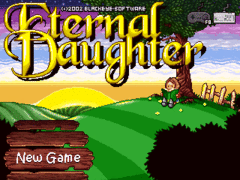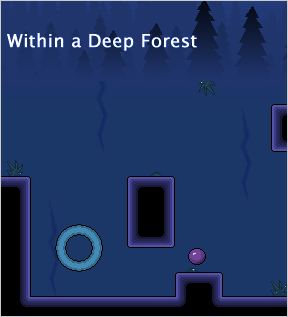PLATFORM ADVENTURE
Third Generation (2002-2008) - WIP
As its previous period drew to a close in the early '00s, we saw the 2D branch of the genre revive on the GBA with a strong start in Castlevania: Circle of the Moon (a launch title), as well as signs of a budding indie game scene that would prove very important in years to come (of course, depending on how they're defined, indie games have always been there).
We also saw the Spyro series drop nearly all of its ability gating save for in one level for its third game, then going 2D isometric for a separate trilogy on the GBA. Structurally the second game is the most Platform Adventure (PA)-like here. By the start of this third period, Spyro: Enter the Dragonfly - the fourth 3D entry - is released by a different developer and sadly it's a game considered much worse than the PS1 games with less satisfying exploration, though it does feature some ability gating via elemental breaths.
More interesting is the Metroid series' transition to 3D in Metroid Prime, a predominantly FP view game which switches to TP view and sometimes side view when in morph ball form, an ability which receives some added movement flexibility. Most of Samus's other abilities from Super Metroid carry over and (perhaps taking a page from System Shock) the game now features a scanning mechanic which allows checking logs scattered about the world as well as examining various parts of the environment for additional info and lore.
While it's not a flawless transition and it does change the exploration gameplay in some fundamental ways, it's an impressive step forward for the genre. During the same year we also see the start of the popular Shantae series, known for its arabic setting and more Zelda/Monster World-like world structure and abilities. Despite being fairly popular and well received it would however take eight whole years for a sequel to be released.
Throughout the '00s, the Metroid and (2D) Castlevania series tend to stick with the now firmly established Platform Adventure (PA)/Metroidvania formula, though it's worth noting that the former shifts its focus to 3D while the latter mainly sticks with 2D as far as the genre goes, and that some entries are more linear than others. The classic CV series fails to regain its status as a major action game brand after the N64 games and is basically replaced by series like Devil May Cry, God of War and the Prince of Persia reboot.
Neither the Metroid nor the CV series has a very large impact on the medium as a whole during this period, meaning we don't see an explosion of PA-style games - instead we tend to see new Action Adventure and ARPG games mostly taking after either a more linear Zelda formula (Beyond Good & Evil, Okami, Batman: Arkham Asylum, Ys: The Oath in Felghana), a more straightforward "AA-lite" approach akin to DMC and PoP, or the Open World formula popularized by the GTA series. Alongside these developments, we also see a different kind of Open World experience evolving within the western, real-time side of the RPG genre in games like Gothic, Vampire: The Masquerade: Bloodlines, Arx Fatalis and Elder Scrolls III: Morrowind, which unlike the GTA-style games take more inspiration from early '90s games like Ultima Underworld and as such share more elements with PAs in their featuring of movement ability gating and experience point leveling.
In the realm of 3D platformers, the Banjo-Kazooie series goes on a long hiatus until the oft-maligned Nuts & Bolts in 2008, which focuses on vehicle construction and mini-game challenges over the strong PA elements of Banjo-Tooie. Most games take no further steps towards the PA genre and Mario only gets a bit closer with Mario Sunshine where the player can gain one permanent movement upgrade used for progression in the hub world only, something which didn't carry over to the Galaxy games. However, Insomniac's Ratchet & Clank series - a spiritual follow-up of sorts to Spyro - maintains a Spyro 2-like formula for some of its games. As for other exceptions, the thematically unique Psychonauts from 2005 is structurally similar to Spyro 2 and Banjo-Tooie, owing partially to its P&C Adventure roots, and the GC game Chibi-Robo from the same year is similar to Psychonauts while featuring a more interconnected world as well as its own unique theme. There's also the genre hybrid Kingdom Hearts, an ARPG/Platformer/Rail Shooter which uses a hub map structure. Finally, a couple of lesser known examples are Scooby-Doo: Night of 100 Frights (2002) and Pitfall: The Lost Expedition (2004).
Looking at the Survival Horror and Stealth subgenres, these tend to avoid platforming, involved movement abilities and non-linearity. One partial exception is the genre hybrid Deus Ex from 2000, which while still a PA outlier features open-ended levels and plenty of ability gating, though the latter is almost entirely optional. The aforementioned Batman: Arkham Asylum also counts as a stealth game hybrid.
By the middle of the decade, Mega Man Zero finally takes the plunge with its spinoff ZX series after having dipped its toes in the genre with the first MM Zero installment. Furthermore, indie development finally starts getting properly recognized by games media as JP developers inspired by certain late '80s-early '90s entries in the genre come up with games now seen as cult classics (Cave Story and La-Mulana), while some western developers also help carry the torch (see for example Within a Deep Forest, Eternal Daughter, Aquaria and An Untitled Story). Notably, around this time is also when mainstream reviewers start applying the Metroidvania term to games outside of the CV series, broadening the meaning of the term.
From the mid-late '00s, we also see more fully formed examples of what can be called PA/Beat 'em up hybrids or Brawlervanias in the games Mortal Kombat: Shaolin Monks, Spider-Man: Web of Shadows (3DS) and Batman: Arkham Asylum - games that put melee combat in focus with forced combat encounters and combo systems.
The last year of this period is subject to change as I decide when the next major release(s) happened. Currently it's 2008.
List Format
Youtube Playlist (WIP)
Feature Spreadsheet (WIP)









































































